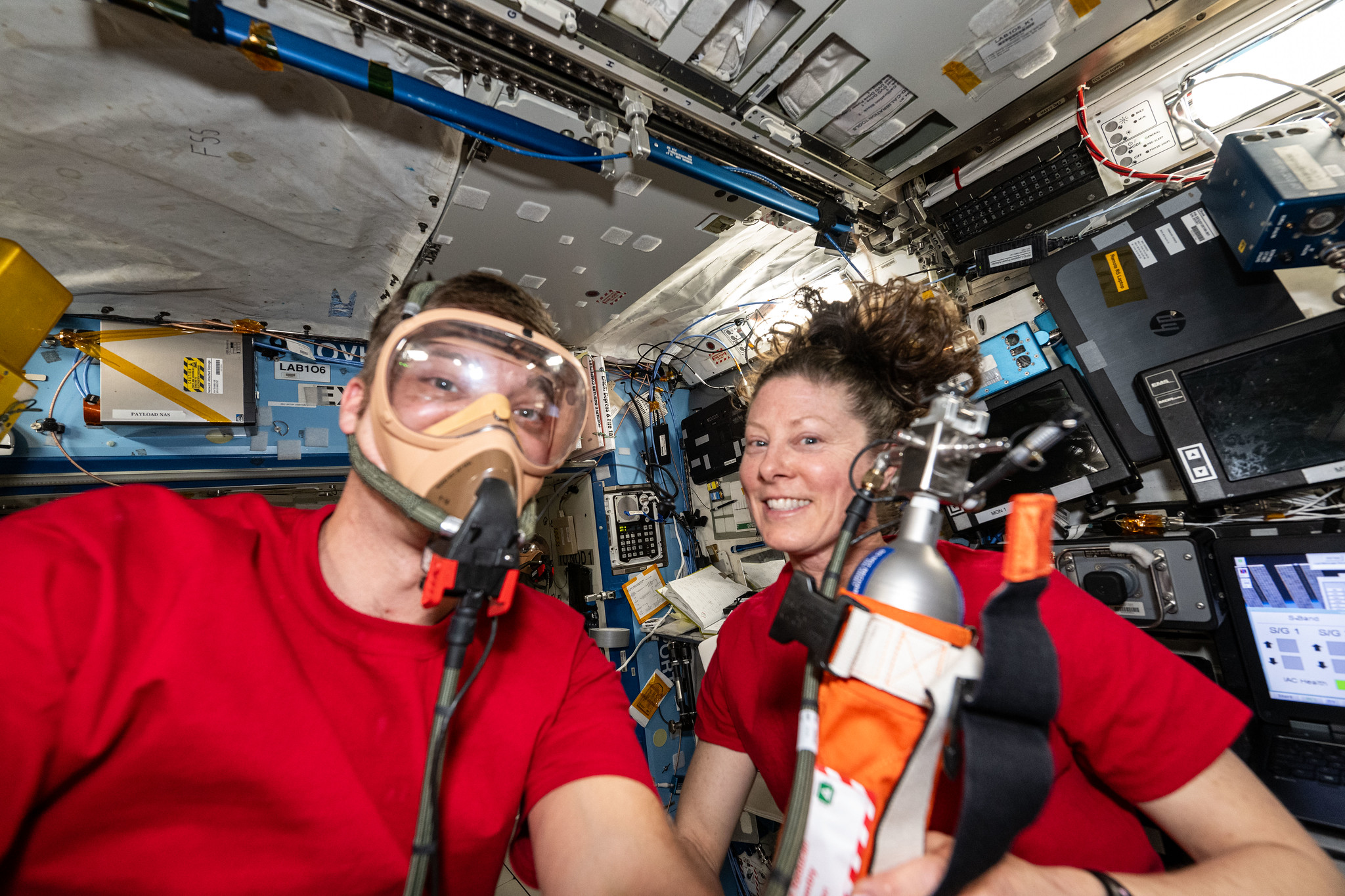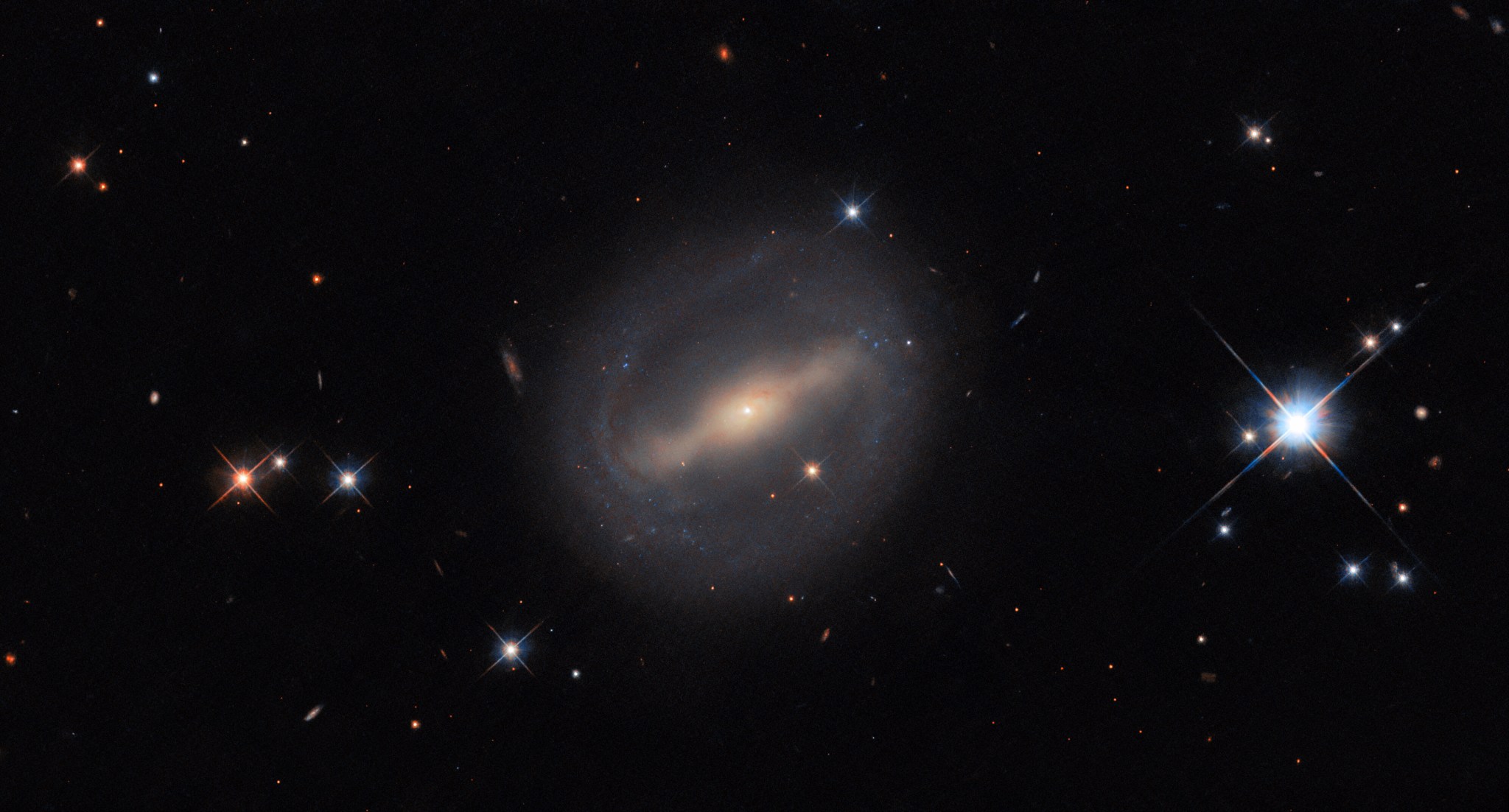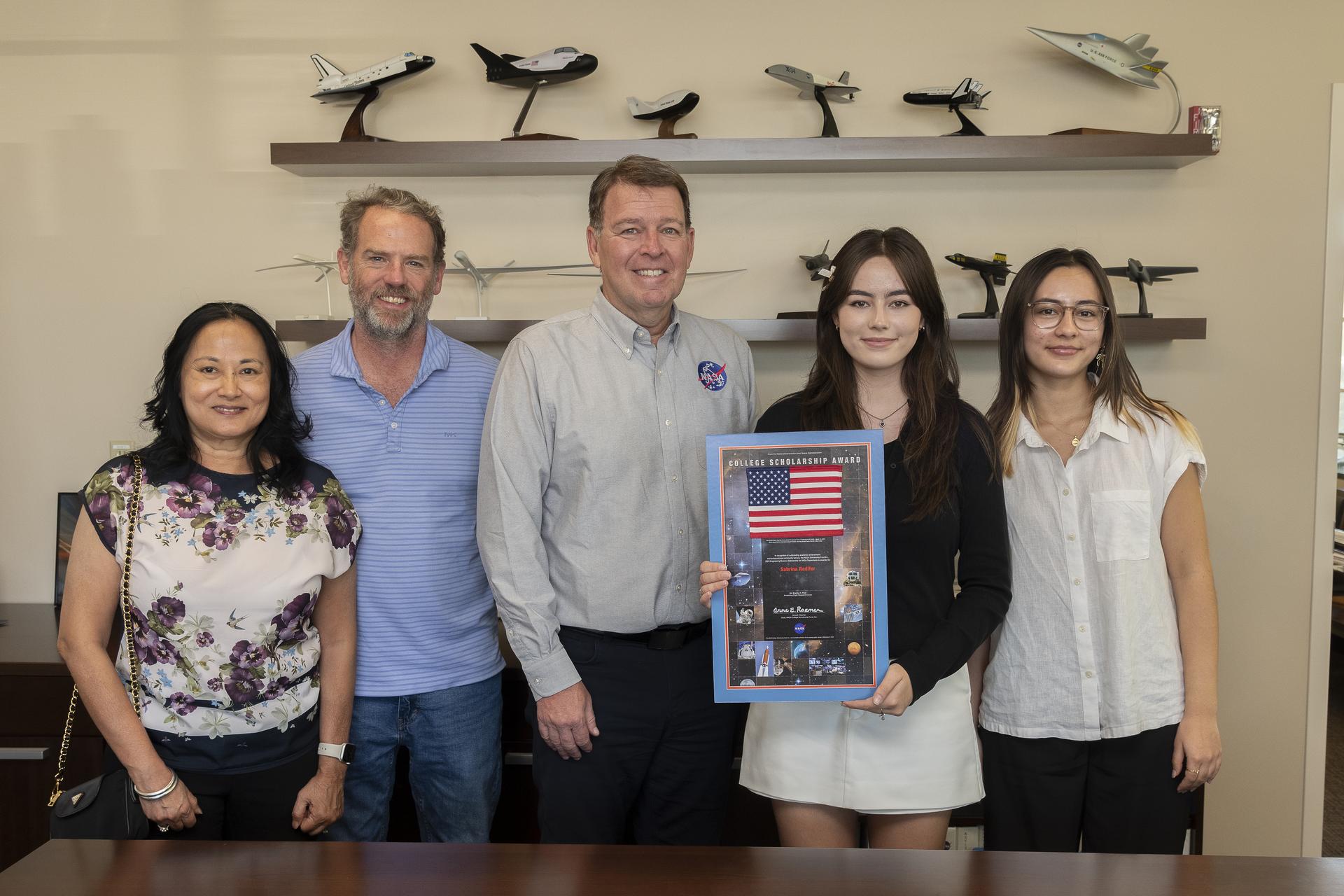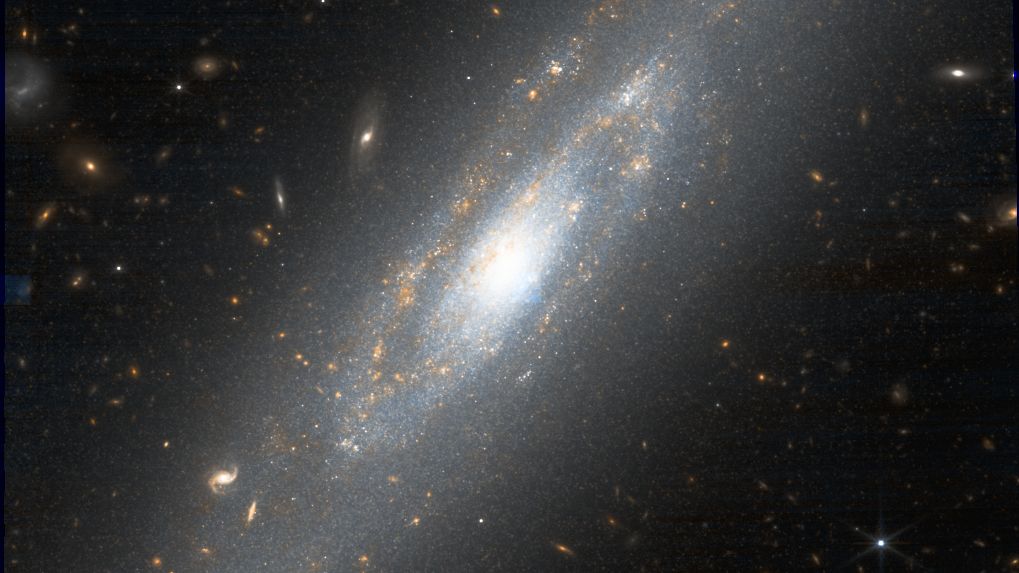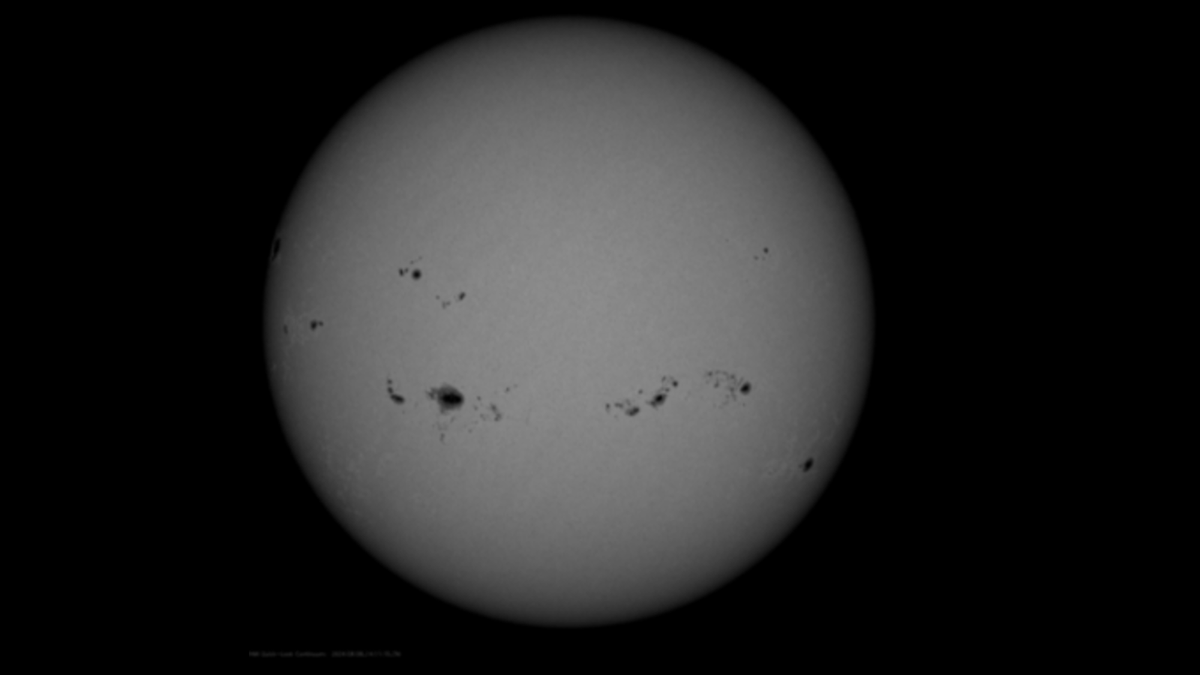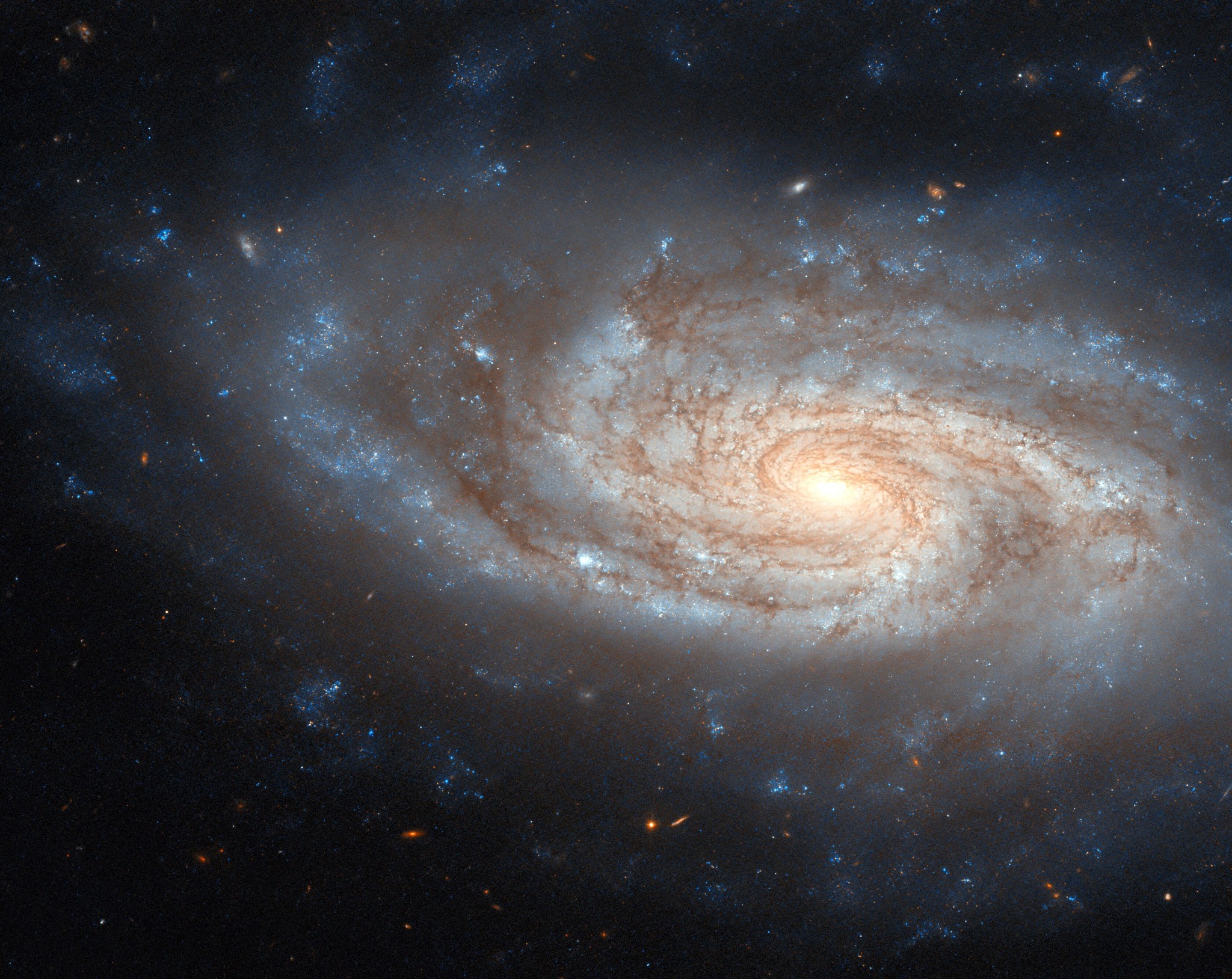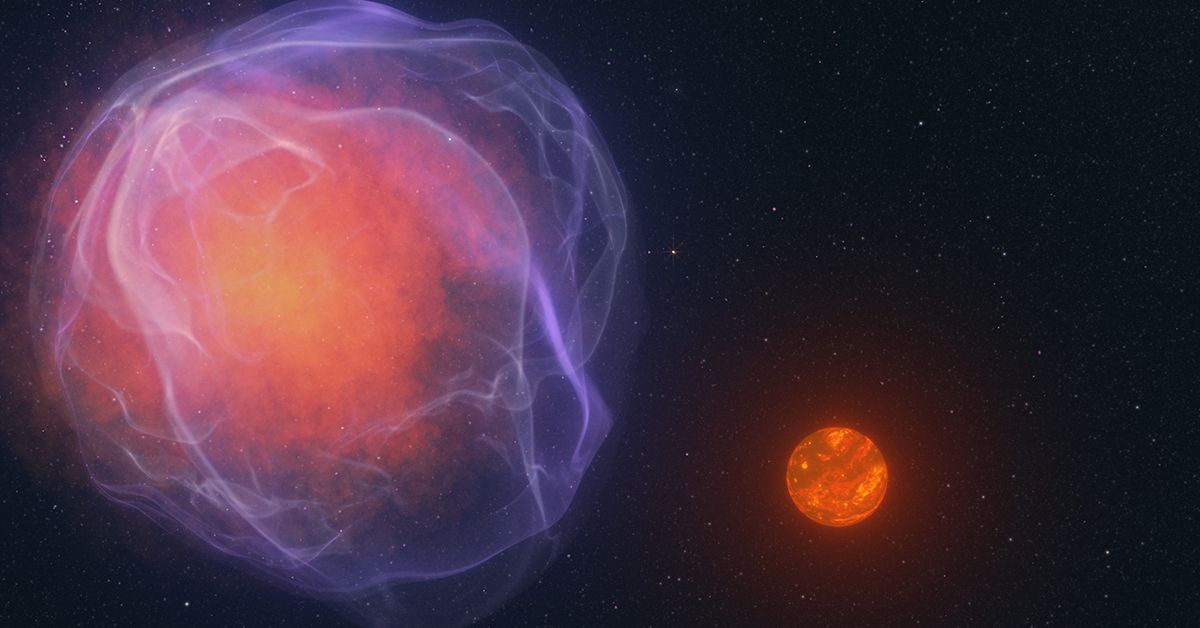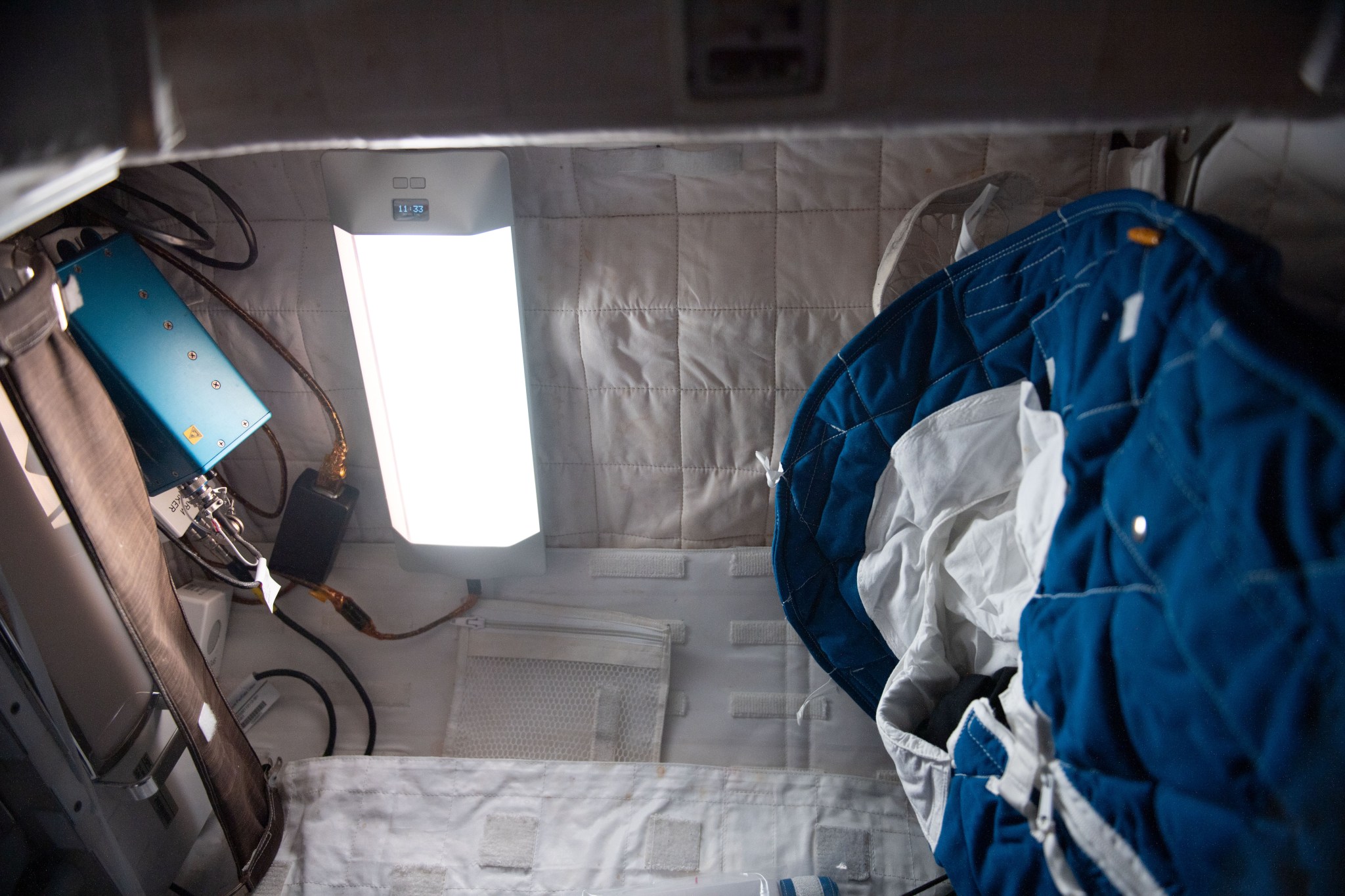Expedition 71 Flight Engineers Matthew Dominick and Tracy C. Dyson, both NASA astronauts, pose for a fun portrait as Dominick tests portable breathing gear aboard the International Space Station’s Destiny laboratory module. (Credit: NASA) Students from Topeka, Kansas, will have the opportunity Wednesday, Aug. 21, to have NASA astronauts Matthew Dominick and Tracy C. Dyson answer their prerecorded questions aboard the International Space Station. The 20-minute space-to-Earth call with students from Mose J. Whitson Elementary, Most Pure Heart Catholic School, and Aviation Explorers Post 8, will stream live at 10:30…
Read MoreMonth: August 2024
Hubble Rings in a New Galactic View
This NASA/ESA Hubble Space Telescope image reveals the galaxy LEDA 857074. ESA/Hubble & NASA, I. Chilingari The subject of this NASA/ESA Hubble Space Telescope image is situated in the Perseus Cluster, also known as Abell 426, 320 million light-years from Earth. It’s a barred spiral galaxy known as MCG+07-07-072, seen here among a number of photobombing stars that are much closer to Earth than it is. MCG+07-07-072 has quite an unusual shape for a spiral galaxy, with thin arms emerging from the ends of its barred core to draw a near-circle around its…
Read MoreSouthern California Student Wins NASA Scholarship
Brad Flick, center director at NASA’s Armstrong Flight Research Center in Edwards, California, presents a 2024 NASA College Scholarship Award to Sabrina Redifer. From left to right are Sabrina Redifer’s parents Matthew and Saynne Redifer, Flick, Sabrina Redifer, and her sister Samantha Redifer. NASA/Steve Freeman Sabrina Redifer, a 2024 graduate of Quartz Hill High School in Lancaster, California, won a NASA College Scholarship Award. Redifer plans to major this fall in molecular, cellular, and developmental biology at the University of California, Los Angeles. She earned a 4.0 grade-point average –…
Read MoreHP Spectre x360 14 (2024) laptop review
If you’re looking for a machine to work with graphics or a convertible 2-in-1 to view media, the HP Spectre x360 14 has something for everyone. Packaged with a digital stylus pen, it’s unchanged in its design compared to last year’s model— but that’s no bad thing. Its premium build quality and high-end feel underline a machine with plenty to offer. Geared to creatives, HP’s well-engineered device is fitted with the latest components—including a high-end Intel CPU and a whopping 32 GB RAM — and a stunning OLED display that…
Read MoreJames Webb Space Telescope adds to the confusing drama of Hubble tension
It would appear that James Webb Space Telescope observations of 10 nearby galaxies suggests the Hubble tension — which is a puzzling discrepancy in measurements regarding the rate of the expansion of the universe — may not be real after all. The James Webb Space Telescope‘s observations put the average value of the Hubble constant (H0), key in determining the rate at which the universe is expanding, at 69.96 kilometers per second per megaparsec. This is indeed consistent with predictions stemming from the standard model of cosmology, which should sound…
Read MoreThe sun might’ve just had a record-breaking number of visible sunspots
On Aug. 8, scientists may have caught hundreds of individual sunspots on images produced by NASA’s Solar Dynamics Observatory (SDO). To us, sunspots might seem really tiny — but don’t be fooled. They are actually dark areas typically the size of the entire Earth on the sun’s surface. Plus, they exhibit strong magnetic fields that can fire off solar flares, which spew pulses of electromagnetic radiation into space. These are the explosions that lead to coronal mass ejections (CMEs) that can create solar storms on Earth. “The process of the…
Read MoreSão Francisco’s Colorful Palette
NASA This Dec. 27, 2023 image of the São Francisco River in southeast Brazil showcases the range of vibrant colors in the area including blues, reds, greens, and yellows. Much of the unvegetated land, such as unplanted fields and unpaved roads, appears in bright shades of red and yellow. This coloration comes from the underlying clays and soils of Brazil’s state of Minas Gerais. The photo focuses on the Três Marias Reservoir, a human-made waterbody fed by the São Francisco River. Access to freshwater for irrigation enables agriculture around the reservoir.…
Read MoreNASA Selects 5 New Roman Technology Fellows in Astrophysics
9 min read NASA Selects 5 New Roman Technology Fellows in Astrophysics This NASA/ESA Hubble Space Telescope image treats viewers to a wonderfully detailed snapshot of the spiral galaxy NGC 3430 that lies 100 million light-years from Earth in the constellation Leo Minor. Several other galaxies, located relatively nearby to this one, are just beyond the frame of this image; one is close enough that gravitational interaction is driving some star formation in NGC 3430 – visible as bright-blue patches near to but outside of the galaxy’s main spiral structure.…
Read MoreNASA Citizen Scientists Spot Object Moving 1 Million Miles Per Hour
4 min read NASA Citizen Scientists Spot Object Moving 1 Million Miles Per Hour This artist’s concept shows a hypothetical white dwarf, left, that has exploded as a supernova. The object at right is CWISE J1249, a star or brown dwarf ejected from this system as a result of the explosion. This scenario is one explanation for where CWISE J1249 came from. W.M. Keck Observatory/Adam Makarenko Most familiar stars peacefully orbit the center of the Milky Way. But citizen scientists working on NASA’s Backyard Worlds: Planet 9 project have helped discover…
Read MoreMental Well-Being in Space
4 min read Preparations for Next Moonwalk Simulations Underway (and Underwater) Science in Space: August 2024 Life on the International Space Station is quite different from life on the ground. Crew members experience multiple sunrises and sunsets each day, spend their time in a confined space, have packed schedules, and deal with microgravity. These and other conditions during spaceflight can negatively affect the performance and well-being of crew members. Many studies on the space station work to characterize and understand those effects and others try out new technologies and practices…
Read More